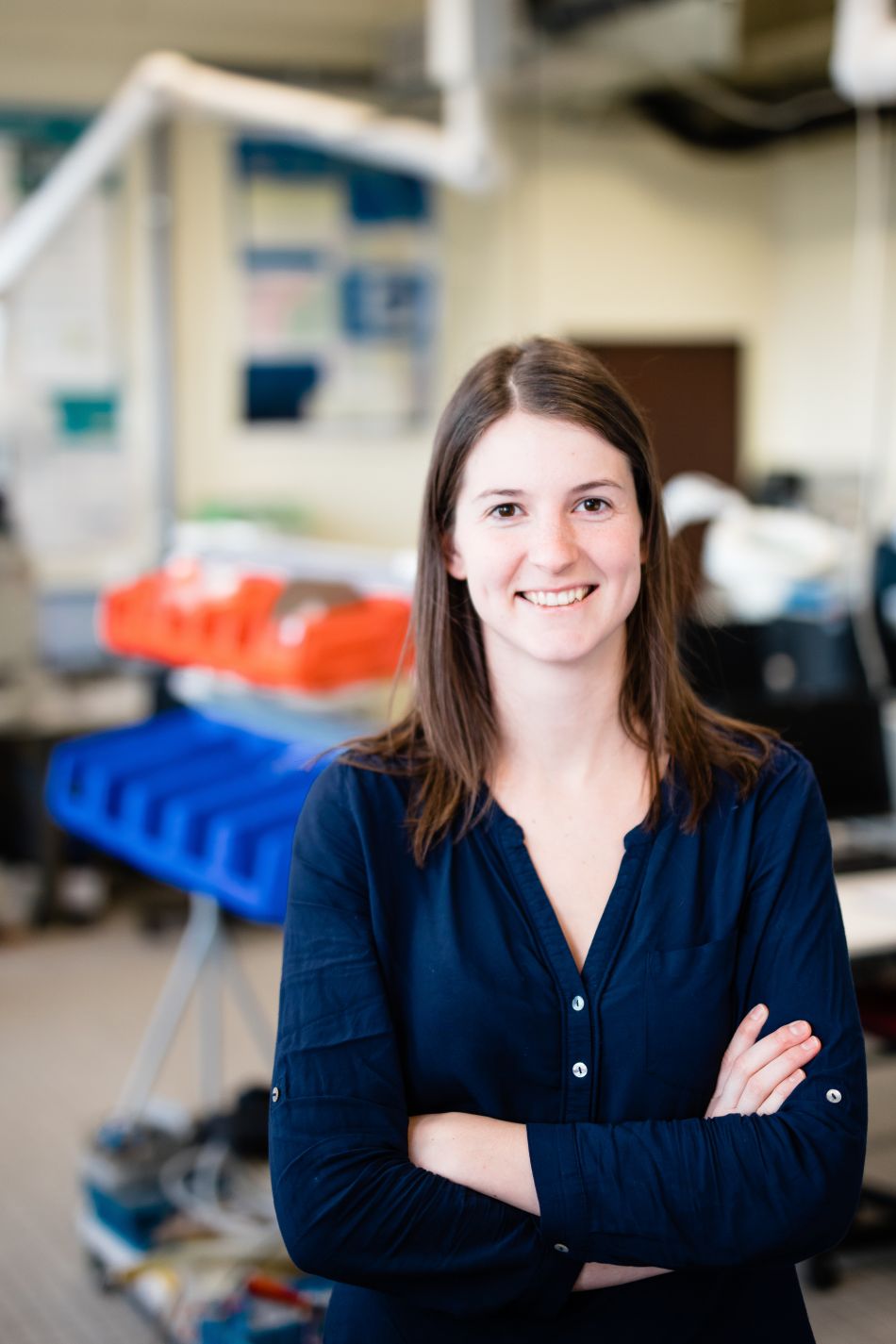“We want to detect bladder cancer early, and do it quickly using a very simple method.”
Is it possible to detect bladder cancer at an early stage without inserting a flexible camera through the urethra in order to see inside the bladder? The search for the answer to this question is already the subject of doctoral research being conducted by Eline Oeyen in collaboration with VITO and the University of Antwerp (UAntwerp), under the supervision of Prof. Inge Mertens (VITO/UAntwerp) and Prof. Stefan De Wachter, head of the urology department at Antwerp University Hospital (UZA and UAntwerp). The research project is investigating whether biomarkers in urine can serve as indicators of bladder cancer.
Cancers of the breast, lungs, prostate and colon are the types most often in the spotlight, with far less attention being paid to bladder cancer. But is bladder cancer common?
Prof. Stefan De Wachter (Head of the Department of Urology at UZA, Professor of Urology at University of Antwerp): Bladder cancer is indeed common: in the West, it is the 4th most common cancer among men and the 8th most common cancer among women. According to the Belgian cancer register, there are around 2,300 new cases in Belgium every year. Rates of diagnosis are around four times higher among men than among women. The disease is particularly common in people over the age of sixty.
The bladder is the organ responsible for the temporary storage of urine produced in our kidneys. Bladder cancer is when there is a tumour in the bladder. Tumours may be either non-muscle-invasive (75% of cases diagnosed) or muscle-invasive (25% of cases). In the latter case, the tumour has already established itself in the muscular layer of the bladder wall, and treating it is often more invasive.
Is it possible to reduce the risk of bladder cancer by changing your lifestyle?
To a certain extent, yes. The greatest risk factor for bladder cancer, just as for many other types of cancer, is smoking. Certain chemicals such as aromatic amines also play a role in the development of bladder cancer. These substances can be found in the paint, textile and rubber industries, among others. Long-term exposure to these substances increases the risk of bladder cancer.
What are the symptoms? What symptoms have you noted in the patients you see?
That is one of the problems we face: there are practically no symptoms in the early stages. Haematuria (blood in the urine) may occur, both microscopically and macroscopically, and often without any pain. Other symptoms that patients may experience include pain or a burning sensation when urinating, having to urinate abnormally often, or having the urge to urinate without actually needing to. However, all of these symptoms may also be caused by other benign conditions such as a bladder infection or hypersensitive bladder, and this means that bladder cancer is often detected too late.
If bladder cancer is suspected, how is the diagnosis made?
The most common methods used to diagnose bladder cancer are urine cytology and a cytoscopy. Urine cytology is used to detect abnormal cells in the urine. This technique is very effective in the case of high-grade tumours, those that tend to develop and spread rapidly. But low-grade tumours, which develop slowly, are less likely to be detected using this technique. Cytology cannot be used to determine the location of the tumour either. To do that, we use techniques such as cytoscopy, a procedure in which a flexible camera is pushed through the urethra into the bladder to look for the presence of tumours. However, this technique is unable to detect flat lesions. The procedure is therefore not only invasive, but also not always 100 % reliable.
Is there an effective way of treating bladder cancer and how is this done?
The treatment depends on the type of bladder tumour, the stage of the cancer and the patient’s state of health. Treatment may vary from resection of the tumour, which may be accompanied by treatments such as local ‘flushing’ of the bladder using chemotherapy, to ultimately removing the entire bladder and performing a urostomy.
Is that treatment effective? What is the prognosis?
There is significant risk of relapse: around 75% of patients who had a non-muscle-invasive bladder tumour will relapse. Patients with a non-muscle-invasive tumour require effective long-term monitoring. Patients who are diagnosed with muscle-invasive tumours have a smaller chance of survival – around 50% after 2 years.
So early detection of cancer cells in the bladder is extremely important for achieving a favourable prognosis. That is where your doctoral research comes in. What does it involve?
Eline Oeyen (VITO): The aim of this doctoral research is to develop a non-invasive and more sensitive test for diagnosing bladder cancer at an early stage using a simple urine test. Bladder tumours are not always easy to detect using current methods. Detecting biomarkers in urine offers a simple and non-invasive method of diagnosis.
What are these biomarkers exactly?
We examine the contents of extracellular vesicles that are present in urine. These are tiny nanosized vesicles that are released from normal cells but also from cancer cells. They are found in urine, but also in other bodily fluids such as blood and cerebrospinal fluid. They contain lipids, proteins, and genetic material such as mRNAs and microRNAs. Under normal circumstances, they play a role in the communication between cells in our body. Researchers have already demonstrated that when they originate from cancer cells, they are involved in the further spread of the tumour. The origin, molecular content, and function of these vesicles mean that they offer huge potential for use in diagnostics. We are analysing their content and looking for biomarkers that could be used to diagnose bladder cancer. The protein content is analysed at the University of Antwerp, where our research group Centre for Proteomics (CfP) is based. This research group is a collaboration between the University of Antwerp and VITO. The vesicles’ lipid content is also analysed, and that work is done in collaboration with a company, the Research Institute for Chromatography (R.I.C) in Kortrijk.
Does this mean that we could use this test as a screening test?
That’s not the purpose of this study. We’re not looking to develop a test similar to the iFOB test for colon cancer. What we want to do is use this test where bladder cancer is suspected in order to make diagnosis possible. The major advantage of this test is that it is non-invasive: all you need is a urine sample. And obviously we hope that the test will be more sensitive than the current methods.
Have you focused the research on a particular stage of bladder cancer?
As we are looking for a biomarker set that is suitable for use in diagnosing bladder cancer at an early stage, we are collecting urine samples from bladder cancer patients with non-muscle-invasive tumours.
How many samples have you collected so far?
Eline Oeyen: To date, 125 bladder cancer patients have participated in the study, and we have collected a total of 300 urine samples from them.
These samples are taken and analysed. Does VITO do that?
Various hospitals are involved in the collection of these urine samples. Some of the samples were collected by UZA at the instigation of Dr Lucien Hoekx during his consultations, but also at the Maria Middelares general hospital in Ghent under the supervision of Dr Filip Ameye, at the Herentals general hospital with Dr Kristof Durt and Dr Siebe van den Bouwhuijsen, and at the Turnhout general hospital in collaboration with Dr Raf Van Reusel. So, many doctors are assisting us with this research, but the nurses in the department also play an important role in the practical implementation, from taking samples to correct data collection. The samples go on to be analysed at VITO and at the University of Antwerp.
When can we expect to hear of the results of the project?
During the first 3 years of the research, we optimised the methods of isolating the extracellular vesicles from urine. We also perfected the method of identifying the proteins present in these vesicles. My doctoral project will finish in 2019, and only then will we have an overview of all the results and an idea of whether potential biomarkers can be found in these extracellular vesicles in bladder cancer patients. In order to ultimately arrive at a validated and usable biomarker set that can be used to develop a urine test, we will need to validate these biomarkers further in a larger group of patients and healthy control participants. Even if our research produces favourable results, we will have to wait a while before a fully validated test will be available.
Professor De Wachter, what is your evaluation of this collaboration with VITO?
Very positive! Collaboration between a hospital and a research organisation such as VITO offers nothing but benefits. As doctors, we know the areas in which scientific research is needed and we have easier access to patients, while research organisations have the funding and resources, and particularly the specialist scientific expertise, to conduct research. Both we and the patients stand to benefit from collaborations such as these.

Medicine, Ghent University (1999, cum maxima laude)
Doctor of Medical Sciences, University of Antwerp (2003)
Present: Head of the Department of Urology at UZA | Professor of Urology (University of Antwerp)

Bioengineering sciences, Cell and genetic engineering, KU Leuven (2015)
Present: Doctorate with thesis subject: “Urinary extracellular vesicles as a source of biomarkers for diagnosis and monitoring of bladder cancer patients”

